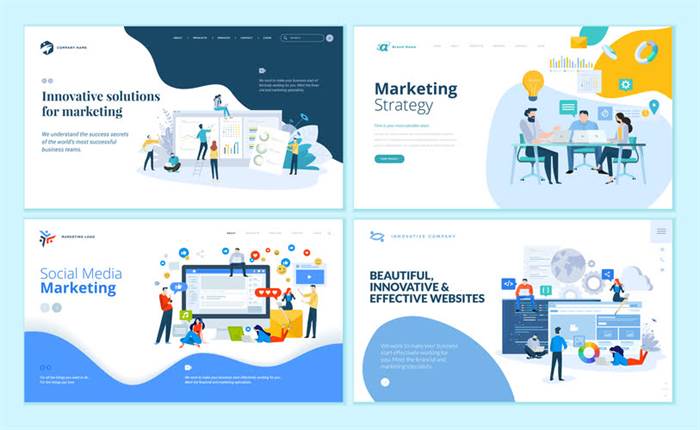Data As A Product Vs Information Products What Are The Differences? By Xavier Gumara Rigol
What if we flipped the mindset, and think about some valuable user-centric classes from our product teams? We’re seeing this shift in perception gain traction, permitting organizations to unlock extra value from knowledge initiatives. We can study from experiences in different industries to make our information merchandise better and therefore provide greater trust and value to our clients.
Data as a product is all about looking at the information you gather and analyzing the method it will affect individuals downstream – your data citizens, finish users, and others. Viewing data Data as a Product as a product is just like viewing your buying elements as merchandise. First, you’d count on that the products are well-organized and easily accessible.
Leaders in data are leaders in enterprise, and treating information as a product is a proven path to successful outcomes; construct belief in information to construct business value. The knowledge team must spend money on trendy information quality approaches to detect and repair anomalies earlier than productionalizing information products. Data high quality should be handled as a enterprise initiative with its primary focus on context, as an alternative of technical dimensions. If, in the extra conventional mindset, tasks end as soon as a dataset or report is delivered, product pondering requires groups to retain possession over a knowledge product for its entire lifecycle. That means data product owners are liable for evolving and adapting the data product to ensure it continues to meet the needs of the customer at the same time as their requirements change. For instance, a company might collect and analyze customer conduct data to create insightful reports or predictive analytics tools.
They are easy to find, understand, and use, and are constant in assembly our expectations. A particular person, or staff, made choices that maximized the simple use of those merchandise, provided a reliable delivery system, and delivered top quality (or no much less than affordable quality). The automobile may be the costliest shopper product we encounter, and likewise a mature product market – at over a hundred years. It’s one worth projecting comparisons in opposition to data merchandise appropriately properly thought out by now. Emilie and Taylor’s definition of data as a product seems to be quite totally different from the HBR, Justin Gage, and Xavier Rigol articles.
It encourages direct communication between the producer and the buyer of information merchandise – chopping out prolonged and convoluted central planning processes. From a big-picture perspective, the business’s aim is to maximize the utilization of its in-house data. Managing knowledge as a product requires applying the appropriate product management ideas.
His chart below exhibits the time & worth tradeoff of DaaP vs DaaS, which illustrates that DaaS supplies particularly extra value, but it requires extra time. A knowledge as a product incorporates the code, its data and metadata, and the mandatory infrastructure to run it. In most cases, nevertheless, CDOs’ roles are poorly defined with unclear expectations. Tom Davenport describes the CDO as the most unstable job in the C-suite. Their tenure is short, turnover is excessive, and the position is usually unclear. Cars come with lengthy instruction manuals, as they are complicated products.
Keep Updated With Our Newest Insights
Not a nasty idea, however the conventional strategy for doing that is doomed as a end result of users can’t typically articulate the solutions they want. In most instances, the consumer isn’t a scientist, an engineer or an analyst. Why hire a buyer to do the job of the marketing, growth, and product planning team? Coming up with the profitable knowledge solution just isn’t the consumer’s responsibility.
Data as a Product refers to treating data as a useful and marketable asset. Instead of viewing data solely as a byproduct of enterprise operations, organizations can intentionally acquire, process, and package deal data to create merchandise https://www.globalcloudteam.com/ offered or used to generate income. Moving away from a single warehouse and transferring duty from centralized groups to a decentralized network of domains are the goals of the “data as a product” method.
Organizations which have the right processes, individuals, and technology in place to create reusable datasets as products could have a aggressive benefit – because all the time saved could be invested in additional advanced knowledge utilization. When treating data as a product, decision-makers are autonomous in informing a choice primarily based on information. This is key for these organizations that envision self-serve analytics and wish to use information as an asset and never simply as a bypass for building a visualization. On the opposite hand, data “as a product” advocates for discoverable and documented information belongings.
Master Data Management (MDM) is a crucial discipline within the subject of knowledge management that allows organizations to centralize and preserve consistent, accurate, and high-quality master knowledge. Treating knowledge “as a service” means your information analysts directly ship data and insights to decision-makers normally within the form of a spreadsheet, a presentation, or an interactive dashboard match for that function. On one hand, we understand product thinking as the flexibility to identify what makes one thing helpful based on capturing consumer needs first. Data as a product includes packaging information that’s easily consumable by the target market. This could embrace creating APIs, information feeds, reviews, or dashboards that provide significant insights or uncooked information for additional analysis.
What Exactly Is A Data Product?
As an information product collates information from numerous sources to provide a value-add, domain-driven decentralized information high quality rises as a key knowledge product consideration. A information product, in essence, is any platform or software that analyzes knowledge and offers results. The key motivator for enterprise adoption is accomplishing company targets via empowered selections made with insights from data merchandise. To implement a data-as-a-product approach, you need to change your method to generating and serving information. That is, you should apply a product management mindset earlier than producing the info and all through the lifespan of the information. It’s not unusual for corporations who want to deal with their information like a product to give attention to one side however neglect the other.

The documentation is available in lots of varieties (on-screen, on-paper, searchable, listed, etc.). Product specifications are goal measurements and configurations of a (class of) product, available by way of product catalogs and up to date as variations change. Understanding who else makes use of the product and the way they rate it is commonplace. We see star rankings based mostly on objective criteria to hunt reassurance and belief. Businesses are continually looking for progressive ways to extract worth from their operations. One such transformative idea is “Data as a Product” (DaaP), which revolutionizes the traditional perspective on knowledge.
What Is Data-as-a-product?
Hiring a CDO, gathering user wants, or sending your staff on information literacy training isn’t wrong, however each strategy has many nuanced challenges that still hinder data adoption. For most people, the choice continues to be the preferred approach to decision-making. Automated pipelines of data delivery need reliable inputs too, for example, understanding that an API is at all times obtainable, or a file shall be delivered appropriately at a sure time, or that the values in a column don’t have any blanks. From the consumer’s perspective, they want to know that the product has been quality-checked to enable them to trust it. Each was designed for a sure class of utilization, function, sort of user, level of expertise – in short, effectiveness to do a job.
- You need individuals who understand the information the business is managing and its potential.
- For example, an information product may provide a 360-degree view of an essential entity, corresponding to clients, workers, product strains, or branches.
- We then apply a set of well-understood practices and instruments which are known to deliver high-quality software program and data.
- Businesses are continually in search of revolutionary methods to extract worth from their operations.
For example, if your customer’s finish goal is to reduce churn fee by 10%, you will need to begin with that objective and work backwards – developingand develop a churn forecasting knowledge product that can meet this need. Thinking of knowledge as a product means placing these person wants at the coronary heart of their design. Fundamentally, data as a product is an idea, or methodology, about how information groups can create worth of their organizations. The basic belief is that making use of product administration rules to knowledge groups will make knowledge work extra valuable and scalable, qualities which were lacking in the information neighborhood for years.
All of them have access to the data and have been on a knowledge literacy course. The others who do not even bother to entry the data will not miss it. We should redefine our relationship with knowledge and produce insights that are extra accessible to customers than gut instincts alone, serving to them make better and quicker decisions. Instead, we must shift our perspective and deal with knowledge as a product that’s accessible, seen and usable for everybody, regardless of their self-discipline or desire. Those who’ve recognised the inherent flaws in an over-investment in defensive methods typically try and comply with a needs-first approach to producing value from information.
How To Adopt A Data-as-a-product Mindset
These key characteristics should assist organizations start their journey of growing information merchandise. I’ve seen that the companies which might be ahead on this area measure effectiveness of their knowledge merchandise via an increase within the usage of its knowledge, which translates to improved data-driven selections. Some organizations are also successfully monetizing their knowledge merchandise. There is no larger kiss of dying to the adoption of data products than the loss of trust within the data’s veracity.

The data-as-a-product method has just lately gained widespread attention, as corporations search to maximise knowledge value. With automobiles, high quality and reliability are inexorably linked, as their primary capability is to offer transport. When you’ve recognized your product, then you need to find a way to register it, find it, observe it, and manage this asset. In established verticals with mature information vendors, stipulations exist to purge “rented” knowledge on the finish of the settlement. When you give your information to a 3rd celebration there’s each legislation and authorized phrases that specify the allowed utilization of that information. Data must also be monitored, in order that that agreed-upon utilization just isn’t being violated or to know and management risks.
Deal With Information As A Product
A data product is a product during which information is the primary facilitator of its primary goal. This implies that a data product is any technological product or element that is determined by knowledge to reach its final objective or purpose. Let’s discuss in regards to the notion of information product and data-as-a-product and what it takes to make this progressive strategy a reality.









